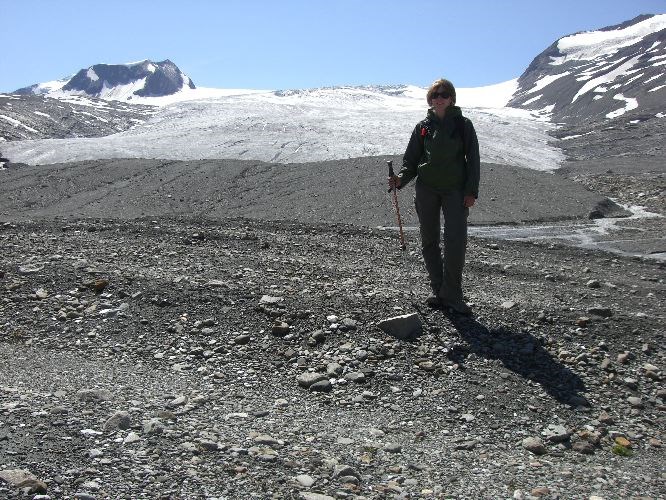Nobody has to convince UNBC masters student Lyssa Maurer our climate is changing rapidly in northern B.C.
She's got the core samples to prove it.
Maurer has proven the hunch of UNBC geography professor Brian Menounos, that after 10,000 years of expansion, Castle Creek Glacier near McBride would provide compelling evidence the glacier abruptly stopped advancing early in the 20th century.
As part of her year-long study, the 26-year-old native of Prince George joined a team of university researchers from UNBC, Calgary, Western Ontario and Simon Fraser University to focus their attention on a lake at the foot of the glacier, which revealed in its sediment when the glacier advanced and when it started to retreat. They have determined the glacier remained close to its Little Ice Age limit for close to 1,600 years before it began to melt.
The small lake, named On-Off Lake by the researchers, is at the base of a hydrological divide, 330 metres from where the glacier advanced to its maximum reaches. That ridge of deposited glacial till, also known as a ground moraine, provided the key in establishing timelines.
When the glacier grew large enough to clear the crest of the hill it dumped fine glacial silt and clay deposits into flowing meltwater which eventually settled at the bottom of the lake. When the ice retreated beyond the barrier, the glacial melt flowed down Castle Creek, rather than into the lake, which received only organic deposits at that time.
The differences in the lake's material deposits over the years were obvious to the researchers in three core samples taken for the study while the lake was frozen. The inorganic glacial material appears light in colour, while the organic plant and animal material is dark.
"The first time the glacier got over the hydrological divide was 2,700 years ago, and we could see that in the lake sediment," said Maurer. "Then it retreated slightly behind this lip and so it accumulated the organic material in the lake. It advanced again 1,600 years ago and stayed past that hydrological divide until the early 20th century.
"What's really interesting about this site is with the divide we can tell in the last 1,600 years the glacier was within 300 metres of its most expansive position [until the early 1900s]."
See Monday's Citizen for more


